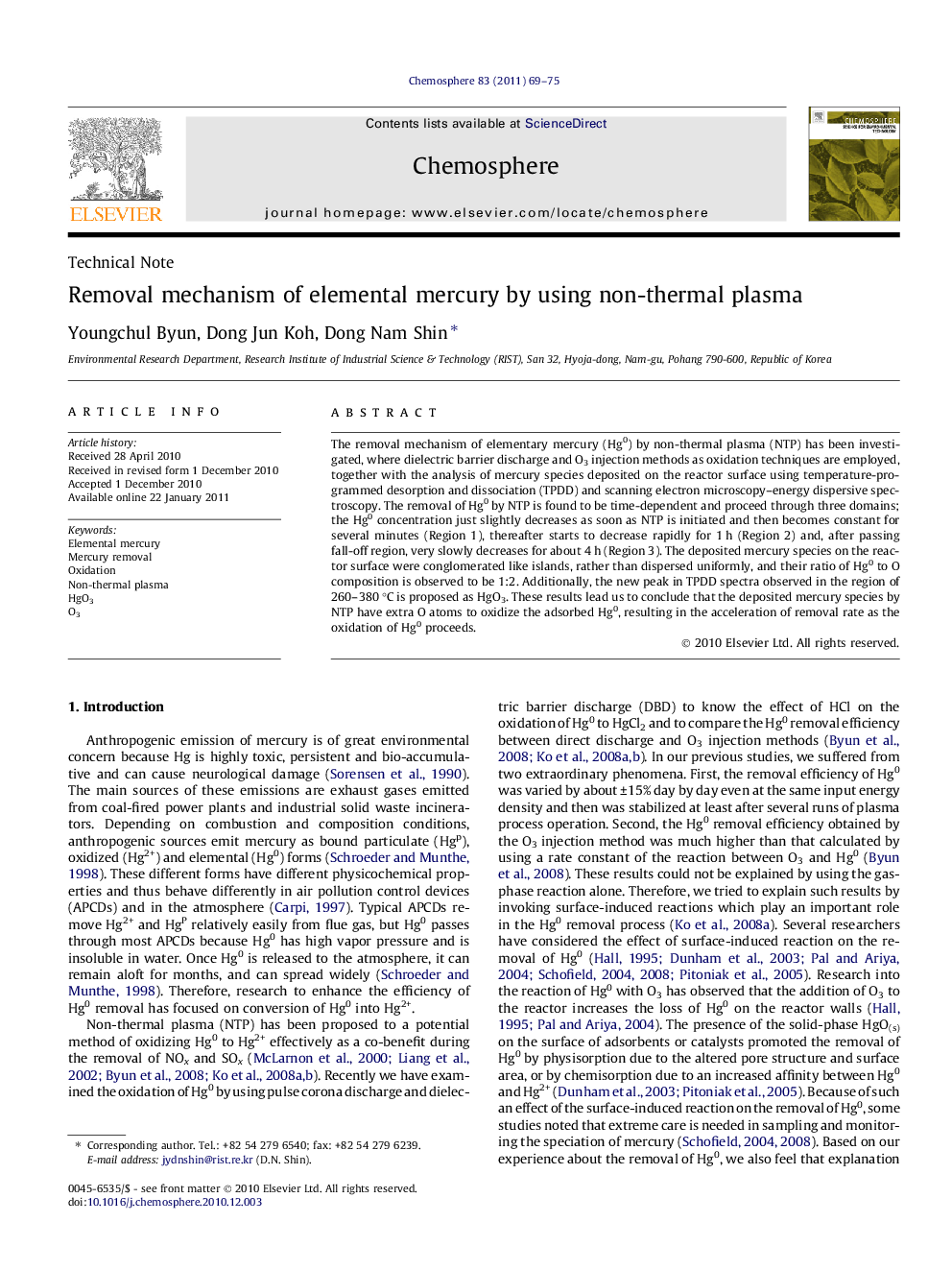| Article ID | Journal | Published Year | Pages | File Type |
|---|---|---|---|---|
| 4411195 | Chemosphere | 2011 | 7 Pages |
The removal mechanism of elementary mercury (Hg0) by non-thermal plasma (NTP) has been investigated, where dielectric barrier discharge and O3 injection methods as oxidation techniques are employed, together with the analysis of mercury species deposited on the reactor surface using temperature-programmed desorption and dissociation (TPDD) and scanning electron microscopy–energy dispersive spectroscopy. The removal of Hg0 by NTP is found to be time-dependent and proceed through three domains; the Hg0 concentration just slightly decreases as soon as NTP is initiated and then becomes constant for several minutes (Region 1), thereafter starts to decrease rapidly for 1 h (Region 2) and, after passing fall-off region, very slowly decreases for about 4 h (Region 3). The deposited mercury species on the reactor surface were conglomerated like islands, rather than dispersed uniformly, and their ratio of Hg0 to O composition is observed to be 1:2. Additionally, the new peak in TPDD spectra observed in the region of 260–380 °C is proposed as HgO3. These results lead us to conclude that the deposited mercury species by NTP have extra O atoms to oxidize the adsorbed Hg0, resulting in the acceleration of removal rate as the oxidation of Hg0 proceeds.
Research highlights► The removal mechanism of the elemental mercury (Hg0) has been investigated within the atmosphere of non-thermal plasma. ► A sudden increase in the removal efficiency is observed after several minutes of the reaction time. ► The formation of HgO3(s) species deposited on the reactor surface accelerates the removal rate of Hg0.
